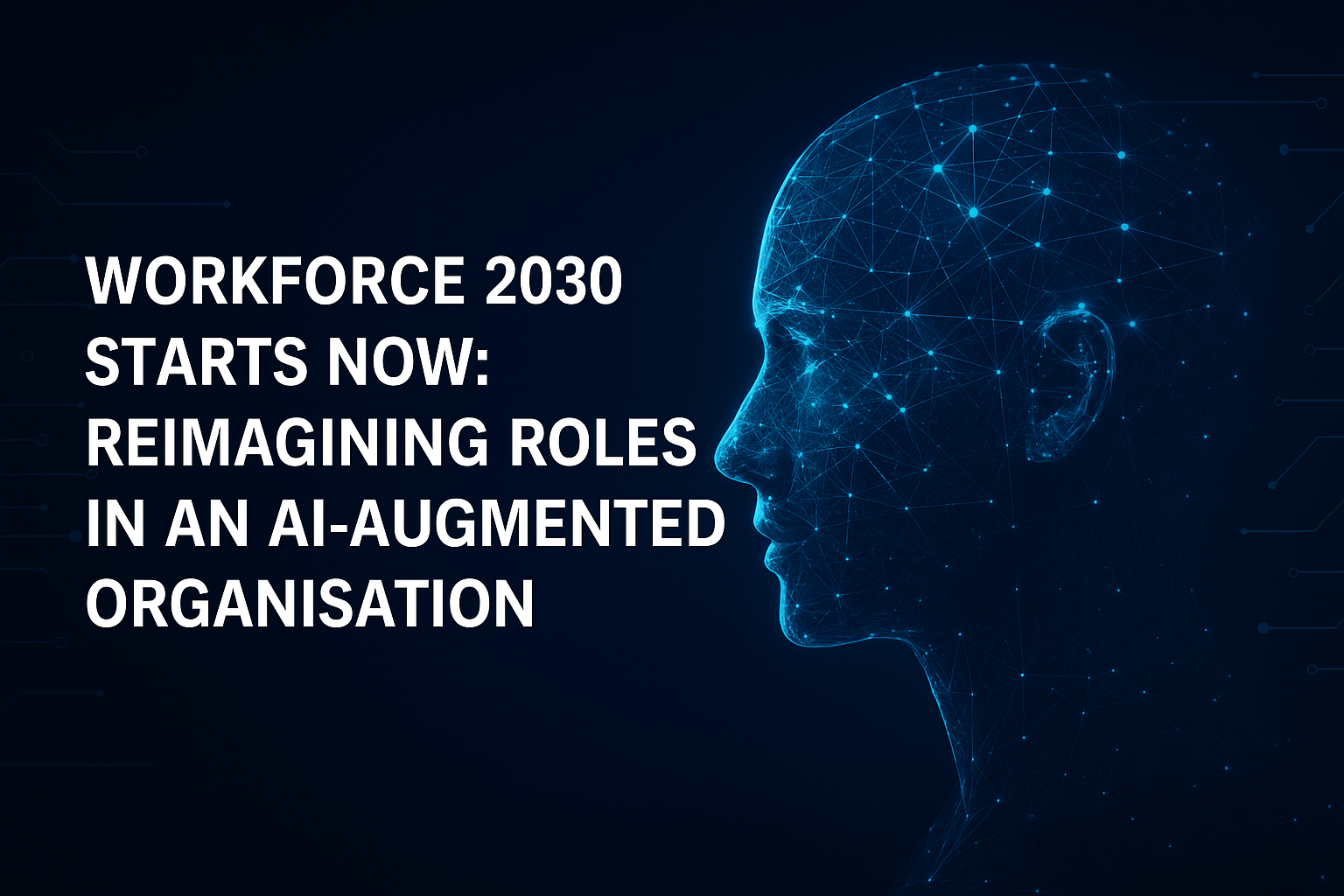
As we stand on the brink of Workforce 2030, the future of work is now, and the integration of artificial intelligence into every facet of our organizations signals a monumental shift in how we collaborate and succeed. AI is evolving beyond being a mere tool; it's becoming an essential teammate that will redefine the way we approach service delivery, decision-making, and daily operations. Organizations that take proactive steps today to adapt their strategies and rethink employee roles will not only survive but thrive in this new landscape.
In this transformative era, we must shift our focus from the fear of job displacement to the exciting possibilities of role reinvention. This blog explores how businesses can embrace this change by reskilling their workforce, redesigning jobs to enhance collaboration between humans and machines, and evolving leadership styles to navigate the complexities of an AI-augmented environment. As we delve into these priorities, we'll provide insights on how to prepare for a future where human intelligence and artificial intelligence work hand in hand, ensuring that organizations emerge more resilient and innovative than ever before.
The future of work is now: Embracing AI as a collaborative force
As artificial intelligence integrates into every facet of business, it fundamentally transforms how we work. The future of work is now, as organizations recognize that AI can enhance, rather than replace, human capabilities. This collaboration between machines and people enables businesses to achieve greater efficiency and innovation. Companies must seize this moment to embed AI into their cultures, workflows, and decision-making processes. Those who act swiftly will position themselves as leaders in the hybrid age of work, driving productivity and creativity through the synergy of human and artificial intelligence.
To fully embrace AI as a collaborative force, workers must develop the skills necessary to thrive in this new landscape. This means prioritizing data and AI literacy, ensuring that employees understand how to interpret and leverage insights provided by technology. Furthermore, organizations need to cultivate a mindset that welcomes adaptability and promoting cross-disciplinary thinking among teams. By fostering an environment where AI is viewed as an ally, rather than a competitor, organizations can harness the transformative power of technology and empower their workforce to achieve unprecedented levels of collaboration and success.
Redefining roles for an AI-augmented organisation: From replacement to reinvention
As AI continues to evolve and integrate into various facets of work, organisations must shift their focus from job replacement to role reinvention. The future of work does not mean that humans will be rendered obsolete; rather, it invites us to rethink how we structure our workspaces. New roles will emerge that leverage the strengths of both humans and AI, creating a dynamic environment where each can thrive. For example, AI Workflow Designers will be vital in crafting seamless interactions between humans and machines, ensuring that technology serves as an enabler rather than an obstacle. This transformation encourages creativity, enhances productivity, and ultimately leads to more meaningful work.
Moreover, the rise of roles like Human-AI Experience Leads and Ethical AI Advisors highlights the demand for professionals who can bridge the gap between technology and human experience. These positions will focus on optimizing how AI enhances user interaction and ensuring that ethical considerations guide AI development and deployment. As machines take on repetitive and mundane tasks, humans can concentrate on innovation and complex problem-solving. This not only fosters a more collaborative atmosphere but also enhances overall job satisfaction as employees engage in work that truly matters. Embracing this shift enables organisations to create a workforce that is prepared for the challenges of the future and driven by cooperation between human and artificial intelligence.
Strategic leadership in 2030: Leading through transformation and uncertainty
As organizations embrace the shift toward an AI-augmented workforce, modern leaders must develop the skills necessary to navigate the complexities of this new landscape. They need to foster an environment of trust and empathy, empowering their teams to experiment and innovate alongside AI technologies. In this transformative era, leadership is not just about making decisions; it’s about inspiring collaboration between humans and machines. By championing digital ethics and promoting a culture of continuous learning, leaders can help their organizations evolve and adapt to the ongoing changes driven by AI.
Moreover, effective leadership in 2030 will require agility and a willingness to embrace ambiguity. Leaders must be prepared to pivot strategies as new challenges and opportunities arise, ensuring that their organizations remain competitive and resilient. By orchestrating collaboration between human talent and AI systems, they can unlock new forms of creativity and efficiency. Ultimately, the leaders who thrive will be those who not only understand the capabilities of AI but also recognize the essential human qualities that drive innovation and success.